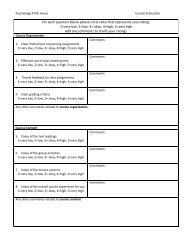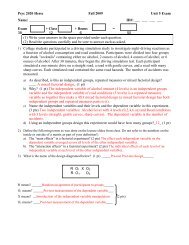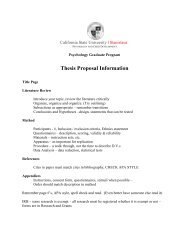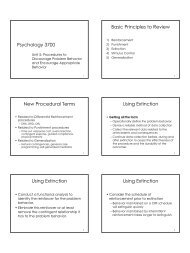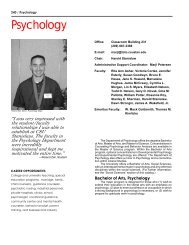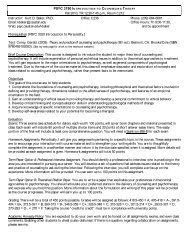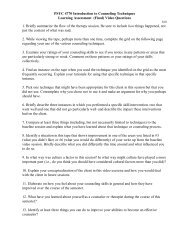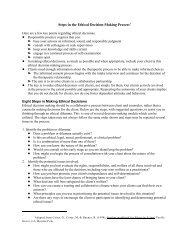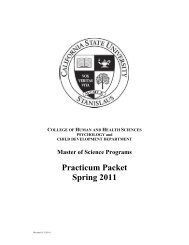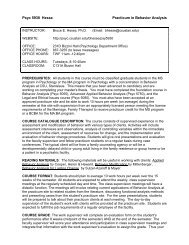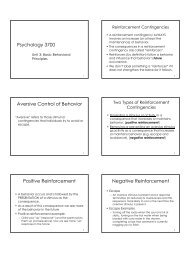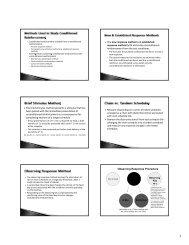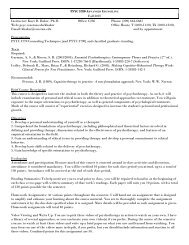(1) Leave a one inch margin on the left side of your answer sheet
(1) Leave a one inch margin on the left side of your answer sheet
(1) Leave a one inch margin on the left side of your answer sheet
Create successful ePaper yourself
Turn your PDF publications into a flip-book with our unique Google optimized e-Paper software.
Psyc 4720 Experimental Analysis <strong>of</strong> Behavior Fall 2010 Unit 1 Exam<br />
8) How does <strong>the</strong> experimental analysis <strong>of</strong> behavior differ from what is usually found in applied<br />
behavior analysis? (2 pts) EAB involves basic research in which <strong>the</strong> studies are c<strong>on</strong>ducted to<br />
discover new knowledge or principles. ABA seeks to discover soluti<strong>on</strong>s to practical problems<br />
usually in applied settings.<br />
9) What do behavior analysts mean by culture (2 pts)? C<strong>on</strong>sistent c<strong>on</strong>diti<strong>on</strong>s arranged by a group to<br />
regulate <strong>the</strong> behavior <strong>of</strong> individuals. These c<strong>on</strong>diti<strong>on</strong>s are c<strong>on</strong><strong>side</strong>red cultural practices.<br />
a) What is “cultural evoluti<strong>on</strong>” (2 pts) and why would behavior analysts be interested in it? (1 pt)<br />
Cultural practices are selected by <strong>the</strong>ir c<strong>on</strong>sequences and cultures gradually change because <strong>of</strong><br />
this (called cultural evoluti<strong>on</strong>). Because behavior analysts are interested in what influences <strong>the</strong><br />
behavior <strong>of</strong> individuals <strong>the</strong>y study cultural practices and how <strong>the</strong>y change so <strong>the</strong>y can better<br />
explain <strong>the</strong> behavior patterns <strong>of</strong> those <strong>the</strong>y study<br />
---------------------------------------------B<strong>on</strong>us Points------------------------------------------------<br />
10) What c<strong>on</strong>tributi<strong>on</strong>s to behavior analysis are associated with :<br />
a) J.B. Wats<strong>on</strong>? (1 pt) Fa<strong>the</strong>r <strong>of</strong> Behaviorism. Brought Pavlov’s c<strong>on</strong>diti<strong>on</strong>ing methods to<br />
American psychologists.<br />
b) E. Thorndike? (1 pt) Law <strong>of</strong> Effect. Used cats to be <strong>the</strong> first American psychologist to study<br />
<strong>the</strong> way c<strong>on</strong>sequences affect behavior.<br />
11) How did Skinner differ from Wats<strong>on</strong> when referring to internal events such as thoughts and<br />
feelings? (2 pts) Both acknowledge internal events but Wats<strong>on</strong> ignored <strong>the</strong>m in his approach<br />
because <strong>the</strong>y couldn’t be studied objectively. Skinner included <strong>the</strong>m in his analysis but not a<br />
special causal events but as more stimuli and resp<strong>on</strong>ses to be c<strong>on</strong><strong>side</strong>red.




